Halogen Is Dead
That's the word from Ronna Cohen at Annapolis Lighting. In a conversation about trends in kitchen lighting, Ronna said that as of this year they are selling "almost exclusively" LED (light emitting diode) lamps for kitchen and bath.
She delivered me a one-minute history of kitchen under cabinet lights as follows:
- In the beginning there was fluorescent. And it was good. In a greenish, glarish sort of way.
- Halogen, bright and white, became all the rage. But it was way, way too hot. You could not store perishables on the first shelf above the lighting unit. It was that hot.
- Xenon elbowed halogen to one side promising bright, white, crisp light without the 3rd degree burn hazard. But nah! It was still a heat making machine
- Then there was LED.
Cooler Brighter Better
Although it is two to five times more expensive than standard lighting instruments, LED equipment is leading the pack in sales this year. A poll by NKBA (National Kitchen & Bath Association) revealed that kitchen & bath designers reported sales of about 50% LED lights in 2010 and 2011. This year those sales spiked to 70%. There must be a reason for this, right? There are several.
We've been yearning for a lighting instrument that produces primarily light not heat in its output. Done. We wanted true light, like daylight so we could enjoy our colors indoors. Check that. We also wanted lighting instruments to burn less energy and last longer between replacements. Yes, yes, yes. The LED is cooler brighter better in every way. It also works well with a dimmer switch unlike it's energy efficient ugly cousin the CFL (compact fluorescent lamp).
Use Less Last Longer
The LED is designed to provide 25,000 to 50,000 hours of light for a period of ten to fifteen years. In terms of energy usage, an LED will use 16 watts to produce the same amount of light (1600-1800 lumens) as a 100 watt incandescent bulb. So they use less electricity, produce no heat and last longer. Also, fewer instruments may be required in a recessed ceiling application because the LED output is greater.
Learn about how to approach a kitchen design and remodeling project by downloading The Definitive Guide to Kitchen Design & Remodeling Success.
8820 Brookville Road,
Silver Spring, MD 20910
© Gilday Renovations 2025
info@gilday.com


Leave a comment